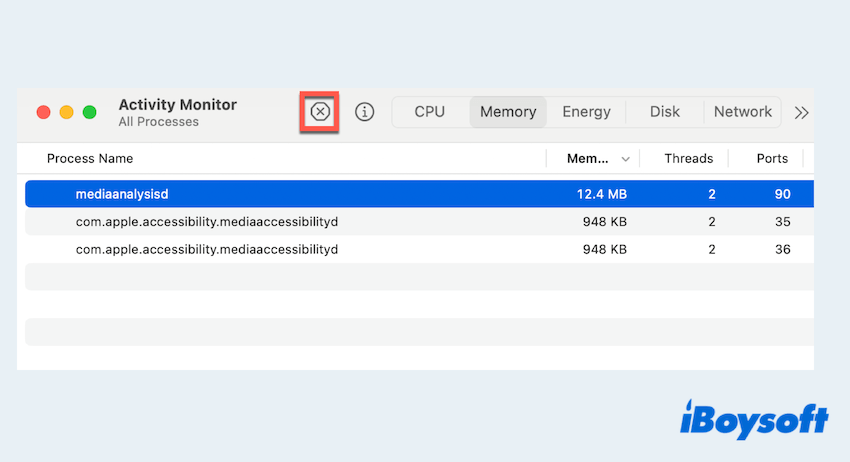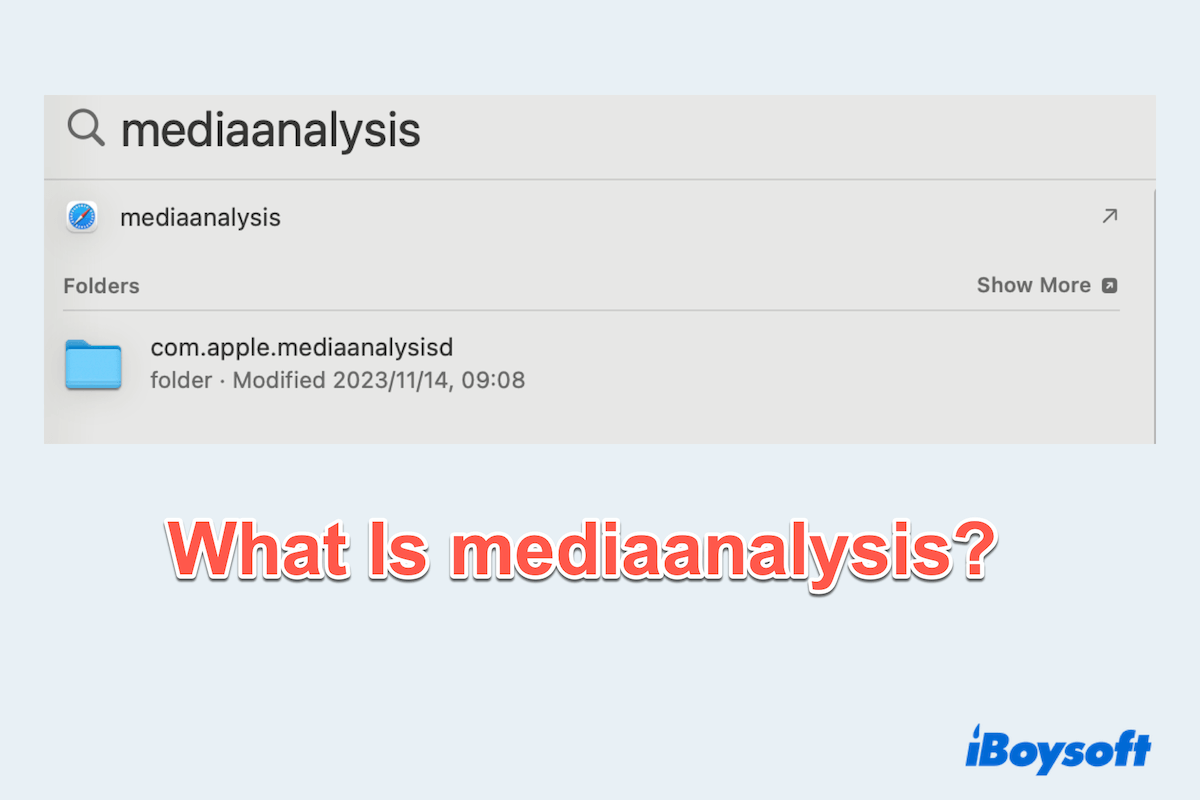MediaAnalysis in Activity Monitor is a legitimate macOS background process designed to enhance how your system understands and organizes media like photos and videos.
When mediaanalysisd or MediaAnalysis is running on your Mac but you feel your system is slow, you can read this post to find fixes.
What does MediaAnalysis do? Is it safe
MediaAnalysis is part of Apple's intelligent media-processing framework. It works silently in the background to analyze media files stored on your Mac, especially in apps like Photos, Spotlight, Finder, and Siri. Its key functions include:
- Object recognition in images (e.g., identifying dogs, cars, or landmarks)
- Text detection using Live Text (extracting readable text from images)
- Face detection and grouping in the Photos app
- Metadata extraction from media files for improved search and organization
Thanks to MediaAnalysis, you can quickly search for images containing specific objects or people, or copy text directly from an image using Live Text.
Is MediaAnalysis safe? Yes, MediaAnalysis is completely safe. It's an official macOS process developed and maintained by Apple. It is not malware, spyware, or a third-party application.
All the analysis done by MediaAnalysis occurs locally on your Mac. Apple emphasizes user privacy, and media content is not sent to Apple servers unless you explicitly choose to sync via iCloud Photos or use cloud-based features.
Why and how to fix mediaanalysisd using high CPU or memory
You may notice mediaanalysisd (the daemon behind MediaAnalysis) consuming high CPU or RAM resources, especially in the following cases:
- After a macOS update or a Photos app update
- When syncing with iCloud Photos or adding a large number of new media files
- During initial setup or first-time media scanning
- When using features like Visual Lookup or Live Text
This resource usage is typically temporary. The system is working in the background to process your media files. Once the analysis is complete, the CPU and memory usage should return to normal.
You can fix the high CPU issue with these fixes:
- Wait it out: If you've recently added media, let the process complete the analysis.
- Restart your Mac: A simple reboot can sometimes reset stuck background tasks.
- Disable iCloud Photos temporarily: Go to Apple menu > System Settings > Apple ID > iCloud > Photos, and toggle it off to stop syncing.
- Limit Photos app activity: Avoid importing large media folders all at once.
- Use Activity Monitor to force quit (if stuck): Open Activity Monitor > Search for mediaanalysisd > Select and click the "X" to force quit.

If the issue persists, consider updating to the latest macOS version, as it may include performance improvements or bug fixes related to background processes.
MediaAnalysis is a vital part of the macOS user experience, powering features like photo organization, visual search, and Live Text. While it may sometimes use more system resources than expected, it's usually nothing to worry about—and it contributes to a smarter, more intuitive Mac.
Please share this post to help more users.
FAQs about mediaanalysis
- QWhat to do when com.apple.mediaanalysisd is filling out my Mac?
-
A
Free up space by clearing unnecessary media files, optimizing the Photos library, and checking for large cache files in /private/var/folders. Reboot your Mac to reset background processes.
- QHow to disable MediaAnalysis on Mac?
-
A
There's no official way to fully disable it, but you can reduce its activity by turning off Live Text, disabling iCloud Photos, and limiting Photos indexing.
- QWhat is mediaanalysis db?
-
A
It's a local database macOS uses to store results of media scanning—like object, face, and text recognition—to speed up search and classification features.
